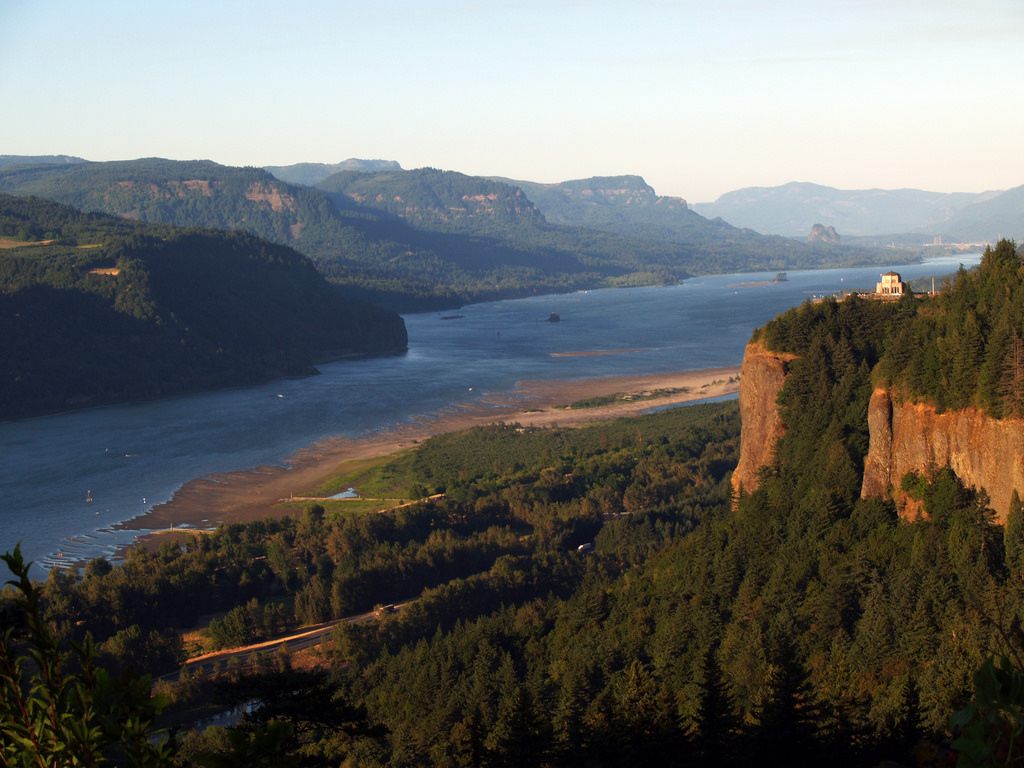Volcanic Eruptions That Shaped Oregon May Have Had a Chilling Effect
A massive amount of sulfur gas probably impacted climate around the world.

There are signs of it all over Oregon and Washington: the dramatic cliffs of the Columbia River Gorge, the layered rock along the Palouse River, the ash deposits around the Zumwalt Prairie. A series of volcanic eruptions, starting 17.5 million years ago, formed the Columbia River Basalt Group, a complex of rock formations that was created over a few million years as lava erupted from fissures in the ground and seeped over the landscape. Among them, for example, is the Wapshilla Ridge formation, the product of about half a million years of eruptions that were, at most, thousands of years apart. The eruptions deposited about 10,000 cubic miles of rock and, according to new research, probably released enough sulfur gas to cool the whole planet down.
“The climate was already warming up rapidly before the whole eruption period started,” says John Wolff, a geologist at Washington State University and coauthor of the study. “Right at the peak of the [Miocene] Climatic Optimum, when these eruptions happened, there’s a little downturn in temperature. It’s actually two peaks of warming, separated by this cooling period.” Wolff and his coauthors argue there could be a link between the Wapshilla Ridge eruptions and that cooling—and that all that sulfur could be responsible.

If the eruptions were frequent enough and strong enough to push sulfur gas all the way to the upper atmosphere, says Wolff, “it can stay in the stratosphere for several years, blocking sunlight.” But if the eruptions aren’t strong enough, the sulfur stays local, forming acid rain. Based on the study of the ash in the Zumwalt Prairie, where Wolff and his colleagues collected samples, “the eruptions would have been quite explosive,” he says.

In order to determine just how much sulfur gas the eruptions released, Wolff’s team collected tiny bits of glass from ash and analyzed their chemical composition. He compares it to a bottle of carbonated soda. Small blobs of gas trapped in crystals are a bit like an unopened bottle that can keep the gas contained indefinitely. The concentrations of sulfur suggest that the eruptions released as much as 305 billion tons of sulfur. The 1815 Mount Tambora eruption that disrupted the global climate for three years released a tiny fraction of that. In fact, the Wapshilla Ridge eruptions released as much sulfur as a Mount Tambora eruption every single day for up to sixteen years. More research is needed to make a definitive link between the eruptions and the period of global cooling, but it’s clear that the period of volcanic activity in the Pacific Northwest is among the largest the world has ever known.




























Follow us on Twitter to get the latest on the world's hidden wonders.
Like us on Facebook to get the latest on the world's hidden wonders.
Follow us on Twitter Like us on Facebook